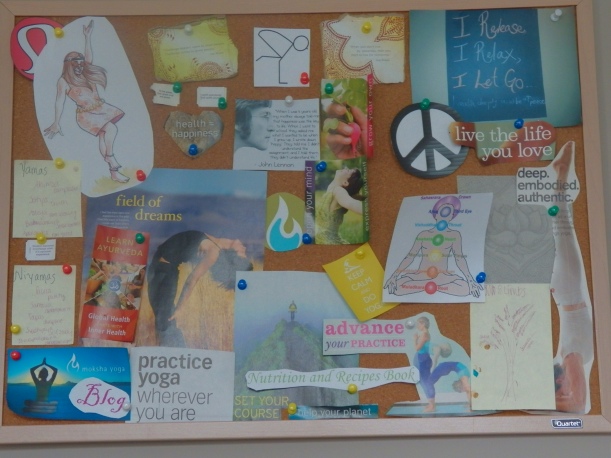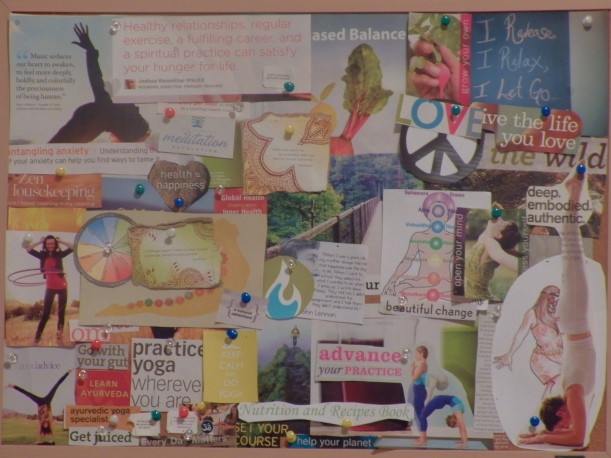
I’m not sure what it is, if it is just this “season” of my life or something going on in the world and our lifestyles, but I have been feeling more and more stressed lately. It isn’t anyone thing that I can pin down, but more a few different things that have been piling up or happening at once. There are days when stress seems manageable or non-existent, but then there are days when it seems impossible to deal with.
Some stress is good. It is your bodies natural response to a possibly dangerous or risky situation, known as your “fight or flight” response. Stress can keep you safe (flight) or motivate you to do more (fight). If you have ever felt like you work better when you have procrastinated, you are well-versed in using stress as a motivation to get something done. Stress is even what we do to our bodies when we work out, bu it is done in a good, purposeful way. This is when stress is use acute, or short-term. It’s when stress is prolonged, or chronic, that it is not good for you.
Prolonged stress can cause your brain and your hormones to work on overdrive. According to the Mayo Clinic, prolonged stress can lead to anxiety, depression and sleep problems, as well as weight gain, heart disease, digestive issues and even mild cognitive impairments. These happen because your body never gets the chance to recover and turn off that “fight or flight” response. Instead, it feels as if it is always under attack, releasing a steady stream of stress hormones and overworking your brain.
You might feel like stress is inevitable, and you’d be right. Stress is not something that we can get rid of completely, after all, some stress is good for you. The best thing to do is find ways to reduce your chronic stress and find a tool that helps you manage it better. One of the best ways to handle this stress is through a regular meditation practice.
Recently, meditation has gone from a practice for the new age, woo-woo, hippy-dippy tribe to something that people everywhere are being prescribed and practicing. Meditation, along with practices like yoga and deep breathing, have gone mainstream. Much of this is due to the large amounts of research that support meditation as a way to rewire your brain, and therefore your daily habits, coping mechanisms and stress patterns.
Research has shown that meditation is not only creates a few moments of calm in an otherwise hectic day, but it actually rewires your brain to handle stress better. It can also help to improve your memory and perhaps even prevent or slow the progression of diseases of the mind, such as dementia and Mild Cognitive Impairment. This is because meditating actually helps your brain to function better. According to a study from University of Wisconsin-Madison’s Center for Healthy Minds in Mindful Magazine, regular meditation can increase the gray matter thickness of your brain, which can help you with everyday functions like problem solving, attention and memory. It also helps decrease activity in the amygdala, the home of our “fight or flight” response. Too much stress and trauma can cause your amygdala to work in overdrive. Meditation has been shown to help decrease that response, so you are better able to work through stressful situations on a daily basis. It also helps to decrease the release of cortisol, your stress hormone. Too much cortisol can contribute to the extra weight gain, anxiety, sleep trouble and memory issues you might experience when you are stressed. Meditation can help you lower these levels and regulate them, to help bring balance back into your body and mind.
Your meditation practice doesn’t have to be scary or intimidating. There are plenty of resources (most are free!) to help you get started. Take just 5-10 minutes a day to meditate. The resources below are 5 simple meditations to try, with apps or websites to go with most. Find a quiet place where you can sit comfortably, without distractions. If you are comfortable with it, close your eyes and begin.
5 Meditation Practices:
- Find a mantra to focus on and repeat:
- A mantra is a quote or saying, sometimes in Sanskrit, that means something to you. Repeating a mantra to yourself is a way to help your mind stay focused on one thing. It also makes it easier to let distractions drift on by. You can use a mantra of your own or try one of these guided meditations from Deepak Chopra.
- Take 5-10 minutes to observe your breath:
- This is a very simple meditation practice and a great one to start with. All you do is take a deep breath in and pay attention to the breath moving into your body. Then breathe out and pay attention to the breath escaping your body. Repeat for 5-10 minutes. If you want more guidance, try this mindful breathing meditation from UVA’s Mindfulness Center.
- Practice counting down from 100 or 70.
- As you sit with your eyes closed, start by taking a few breaths. Then just start to count down from a number between 70 and 100. This helps you to focus on one thing, allowing your mind to clear a bit. If your mind wanders, that’s ok, just comes back to your counting. It take 5-10 minutes to complete.
- Chant or sing aloud:
- If you are wanting to try something out of the ordinary, or perhaps something to keep your mind from wandering, chanting is a great meditation to try. The “Satanama” (sa ta na ma) meditation takes just over 10 minutes and is broken down into increments. If you feel bored with meditation, this one will keep you focused and help prevent some of the boredom. There are many chants you could try, but this one has been shown to possibly help prevent dementia and cognitive impairments. You can find it on YouTube.
- Savasana or body scan:
- If you want to deeply relax during your meditation, try a Savasana or full body scan. Savasana is also known as the “corpse” or “final relaxation” pose in yoga practices. It is done at the very end of classes to help you fully relax after your practice. It is done by laying on your back. You can simply breathe in this pose or recite a mantra silently, or do a full body scan. A full body scan helps you to notice and deeper levels of stress that might be present within your body and breath, so you can start to release them. You can try this one your own by simply scanning, or observing, from our toes to the top of your head. You can also find a guided practice from UVA’s Mindfulness Center here.
If you want to try more meditations, or have a little more guidance, try finding a meditation class near you or try one of these meditation apps: Headspace and Pacifica. You can also follow along with the guided meditations in the Resource Library.
Have you ever given meditations a try? Why or why not? If so, what type worked best for you? Leave a comment below and lets discuss how we can help it work for each other.
Much Love,


![]()








